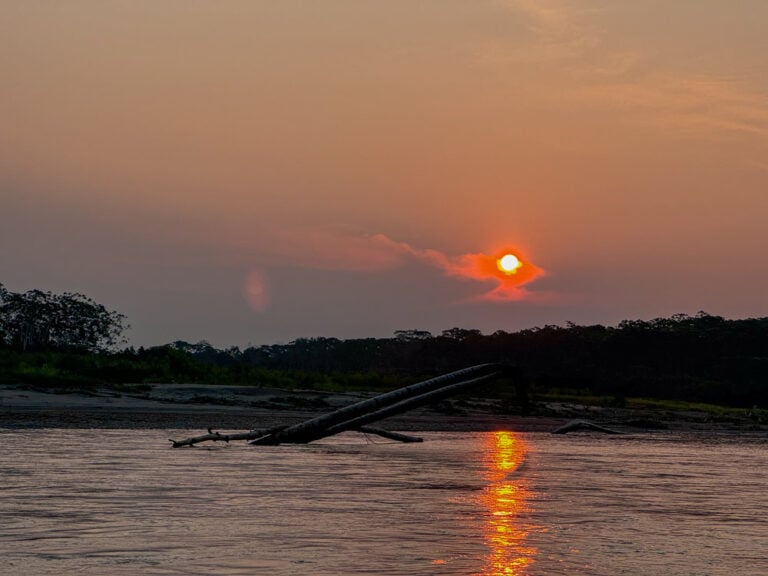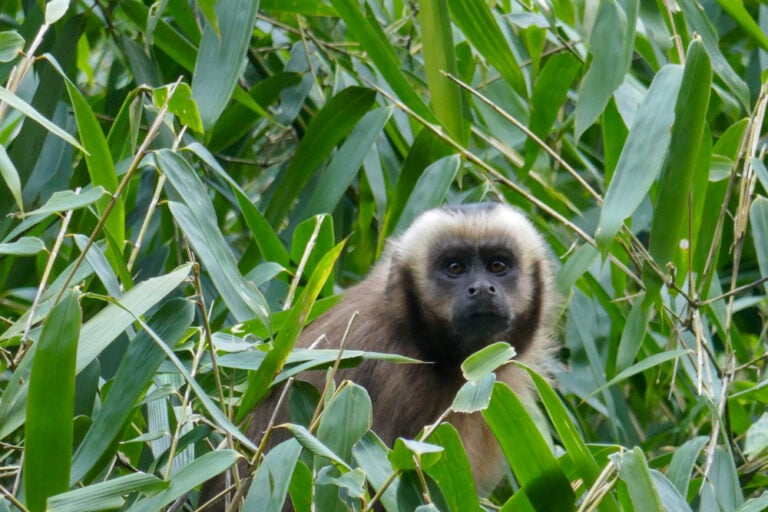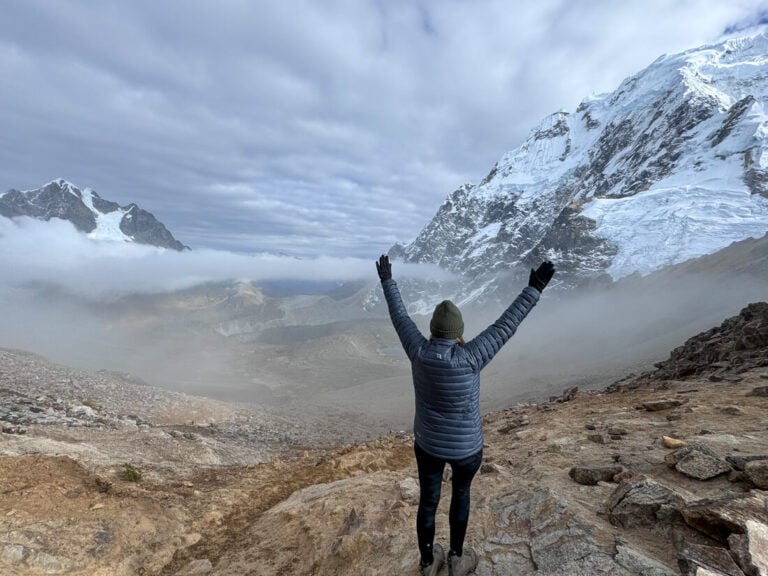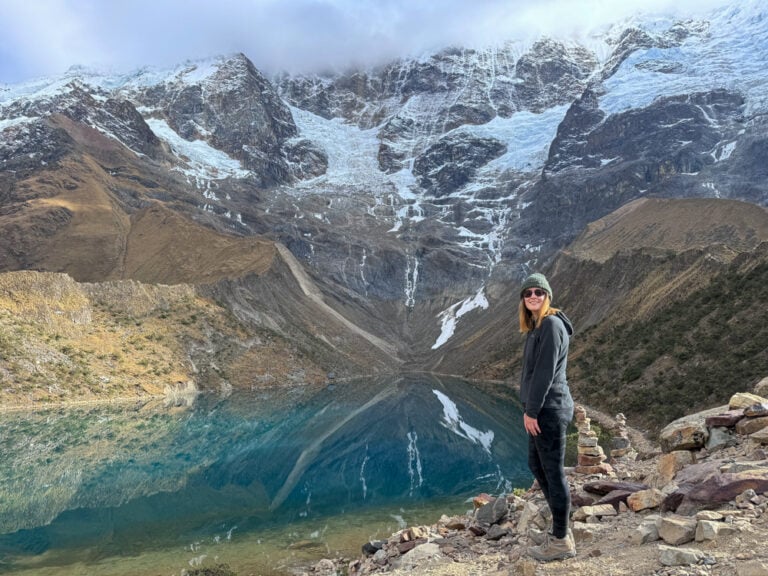Inca Trail vs Salkantay: Which Is Best? (+ How To Do Both)
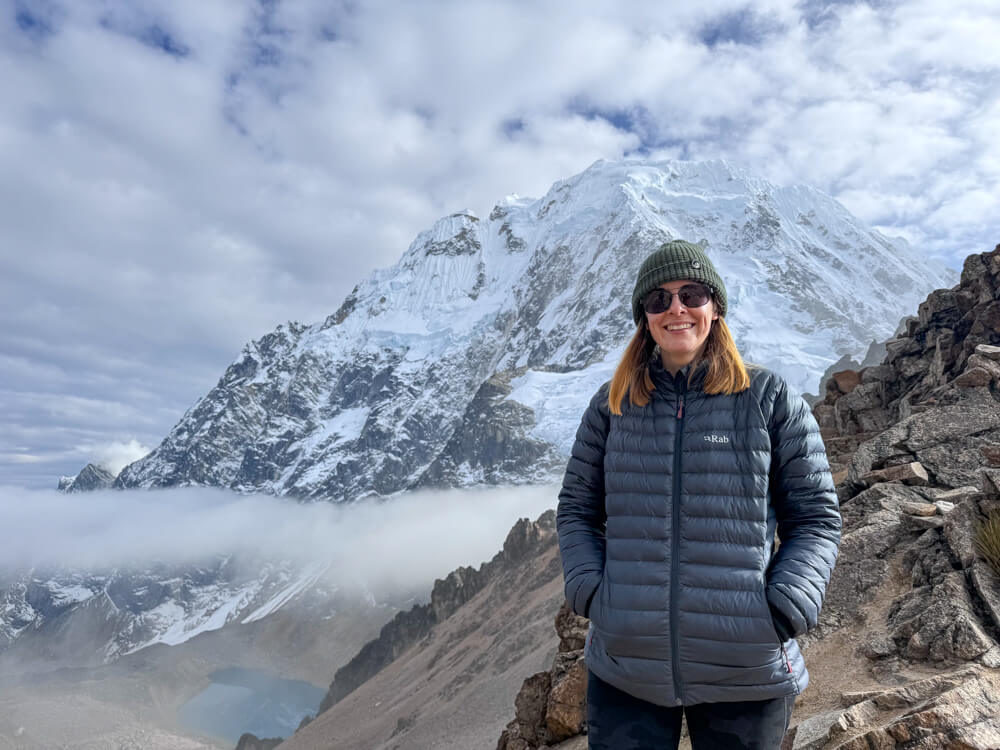
The Inca Trail and the Salkantay Trek are two of the most popular hikes in South America (if not the world). Both lead you through a stunning range of scenery to the world-famous Machu Picchu, an incredible Inca site and one of the Seven New Wonders of the World.
Both hikes are in the heart of the Peruvian Andes and offer spectacular views of the surrounding scenery. I love hiking, and deciding which hike to do was a challenge. In the end, I opted to do both as a week-long hike. This puts me in a great place to talk about the pros and cons of each, and help you decide which to do.
In this post, I’ve shared all you need to know about the Inca Trail vs the Salkantay Trail. While both hikes take you to Machu Picchu, only the Inca Trail allows you to walk through the famous Sun Gate to see the famous Inca site. However, the Salkantay boasts epic views of the mountains and is much quieter, so choosing between the two isn’t easy.
Here, you’ll find information to help you decide which hike is right for you. I’ve also shared how you can combine the Inca Trail and Salkantay Trek together into one epic 7-day hike to get the best of both worlds.
Overview of the hikes
Inca Trail
The famous Inca Trail is known to be one of the best hikes in the world. Most people opt to do the classic 4-day Inca Trail trek which involves three nights of camping as you follow in the footsteps of the Incas. On day four, you wake early and trek to the Sun Gate. If the weather is in your favour, you’ll witness sunrise over Machu Picchu, a bucket list worthy moment for sure.
Time: 4 days (but shorter routes are possible)
Total distance: 26 miles (42 kilometres)
Best time of year: June to September (the dry season)
Maximum elevation: 4,215 metres (13,828 feet) above sea level
Terrain: Mostly concrete path and steps
Accommodation: Basic camping
Difficulty: Moderate (in terms of multi-day high elevation hikes)
Permits: Required

Salkantay Trek
The Salkantay Trek is a little more off the beaten path. The trek takes you around Salkantay Mountain to Aguas Calientes. On day five, you’ll visit the UNESCO World Heritage Site of Machu Picchu. This trek is much deeper into the mountains and a much more remote experience.
Time: 5 days (but shorter hikes are possible) Day five is spent at Machu Picchu
Total distance: 46 miles (74 kilometres) (shorter routes possible)
Best time of year: June to September (the dry season)
Maximum elevation: 4,600 metres (15,090ft). Again, this varies on the route. Mine went above 4,900 metres.
Terrain: Dirt, gravel, scree, rocks, mud
Accommodation: Camping and cabins (dependent on tour operator)
Difficulty: Challenging
Permits: None required
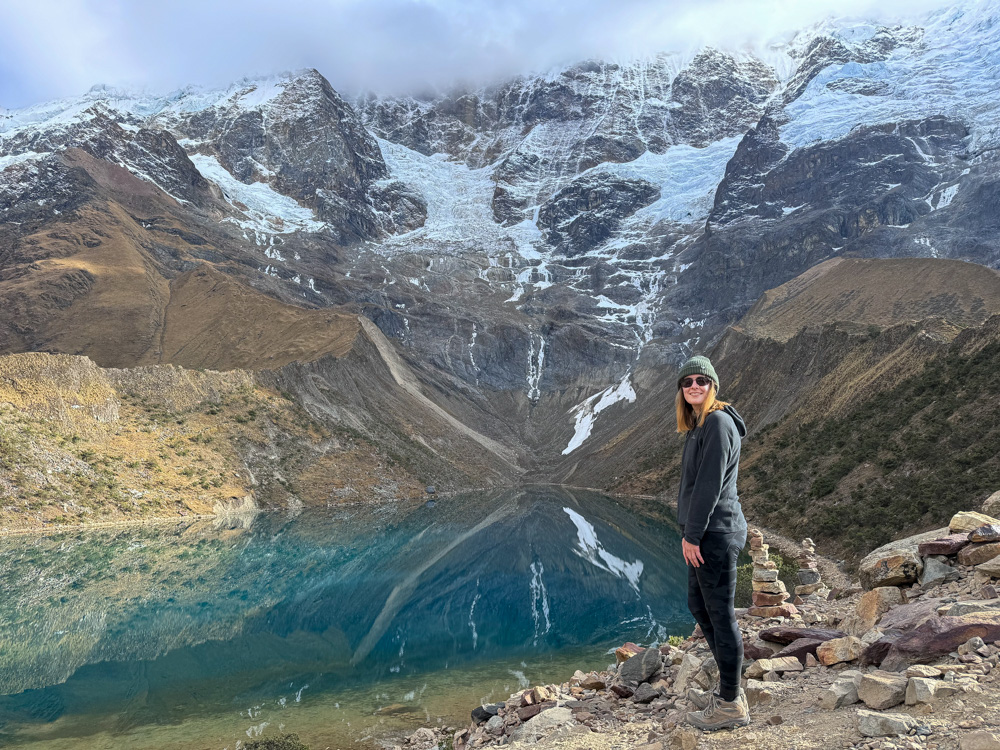
Combined Salkantay and Inca
The combined hike joins three days of the Salkantay with the classic Inca Trail. It’s a great way to see the best of both hikes and avoid picking between them. It’s a long hike with higher elevations, but it offers such a diverse range of scenery and hiking terrain. It’s one of my all-time favourite hikes.
Time: 7 days
Total distance: 50 miles (80 kilometres)
Best time of year: June to September (the dry season)
Maximum elevation: 5,000 metres (16,400ft)
Terrain: Dirt, gravel, scree, rocks, mud, concrete and steps
Accommodation: Camping and cabins (dependent on tour operator)
Difficulty: Very challenging
Permits: Required for Inca Trail portion
Salkantay or Inca trail?
Of course, not everyone has the time to do a seven-day hike (or has the physical ability). If you can only do one, here’s which hike comes out on top for different elements.
Best scenery
It’s almost impossible to compare the scenery of the two treks. Both offer spectacular scenery and despite being close to each other, they are entirely different.
The Salkantay Trek is much higher in elevation and takes you deep into the mountains. You’ll see spectacular glaciers, stunning blue lagoons (including Humantay Lake), and cross high mountain passes.
The Inca Trail is slightly lower in elevation. While you’ll still be rewarded with incredible mountain scenery, you’ll spend much more time in the jungle and cloud forest. One of my favourite days of the Inca Trail was on day three right before we arrived at the campsite. The views of the valley and the Urubamba River took my breath away.
While the scenery on the Inca Trail was beautiful, it just doesn’t compare to seeing Salkantay Mountain up close. The stars, the lagoons, the glaciers, and the wilderness were all so magical. If you want scenery that is constantly blowing you away (physically and literally), I’d highly recommend the Salkantay Trek.
Winner: Salkantay Trek
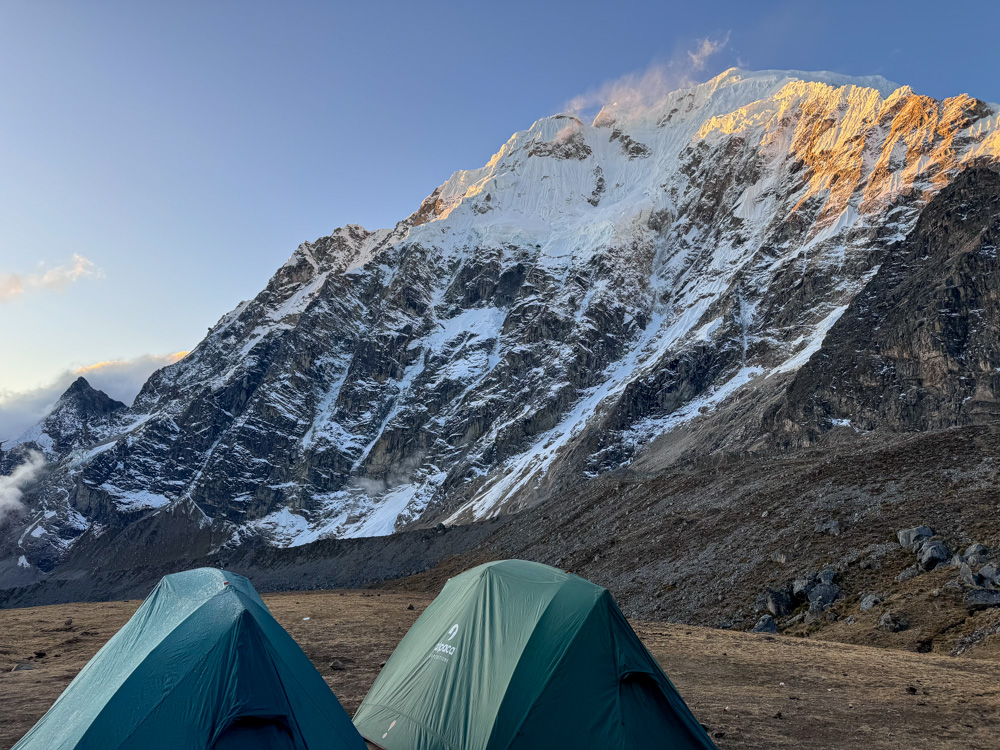
Fewer crowds
The Inca Trail is one of the most popular trails in Peru, and while there are permits to limit the number of people, it’s still busier than the Salkantay.
While the Salkantay has increased in popularity in recent years, most tour operators have their own accommodations and campsites, and some follow their own unique routes. This means you won’t see nearly as many crowds as on the Inca Trail.
The only other people we saw on the Salkantay Trek were at Humantay Lagoon, a popular day trip from Cusco.
I visited the Inca Trail at the busiest time of year (August), which is known to be the best time of year for both hikes. I’m sure the trail would be quieter in the rainy season (December to March – except February when the trail is closed), but it might not be the most pleasant.
Winner: Salkantay Trek
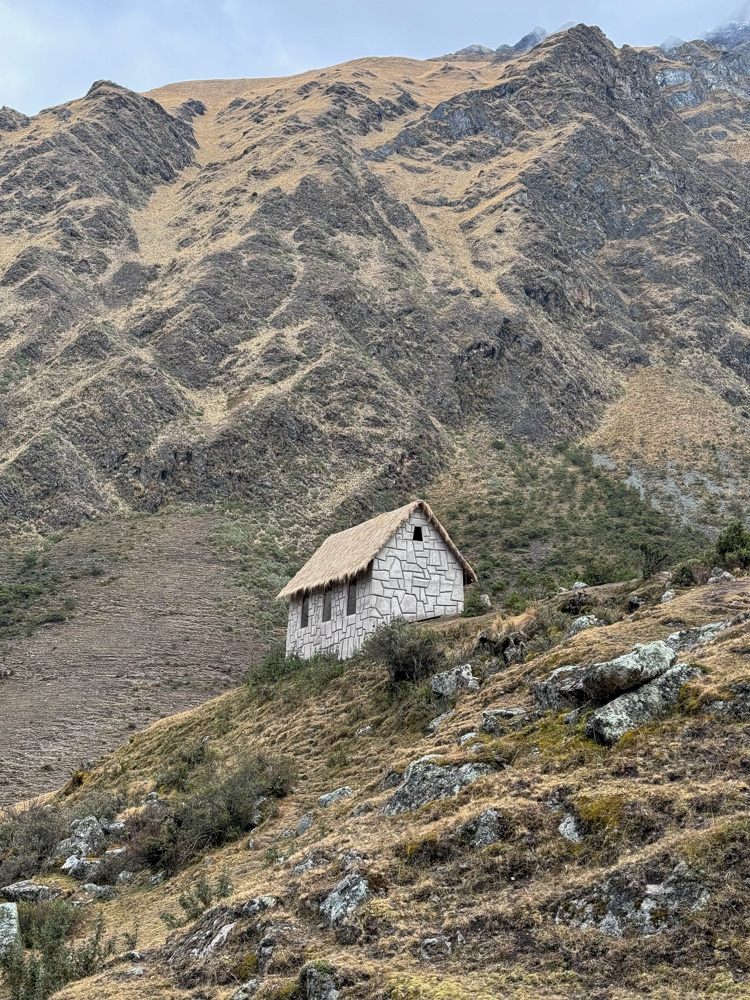

Best for last-minute planning
The Inca Trail operates on a permit system, and the permits regularly sell out months in advance (especially during the winter months). This means that planning the Inca Trail at the last minute is almost always impossible.
If you want to complete the Inca Trail between June and September (the high season), I recommend checking the availability of permits around eight months in advance. You can check the permits here. The website shows you how many permits are available for each day, and it should give you an idea of how quickly you need to book.
For context, I booked my hike in March to complete it in August and got one of the last Inca Trail permits for the day. There will be more flexibility if you visit outside of the peak season. (Side note: Inca Trail permits are typically released in October/November for the following year).
The Salkantay Trail is a better option if you like to plan everything at the last minute. Many tour operators offer last-minute spots, including for the next day.
Just be aware that tickets for Machu Picchu itself can also sell out weeks in advance. I visited during peak season, and many travellers had to spend a few days in Aguas Calientes (Machu Picchu town) to get last-minute tickets. Some operators will take you on the hike, but you’ll be responsible for sorting your entry tickets. If you book far enough in advance, this shouldn’t be an issue.
Winner: Salkantay Trek
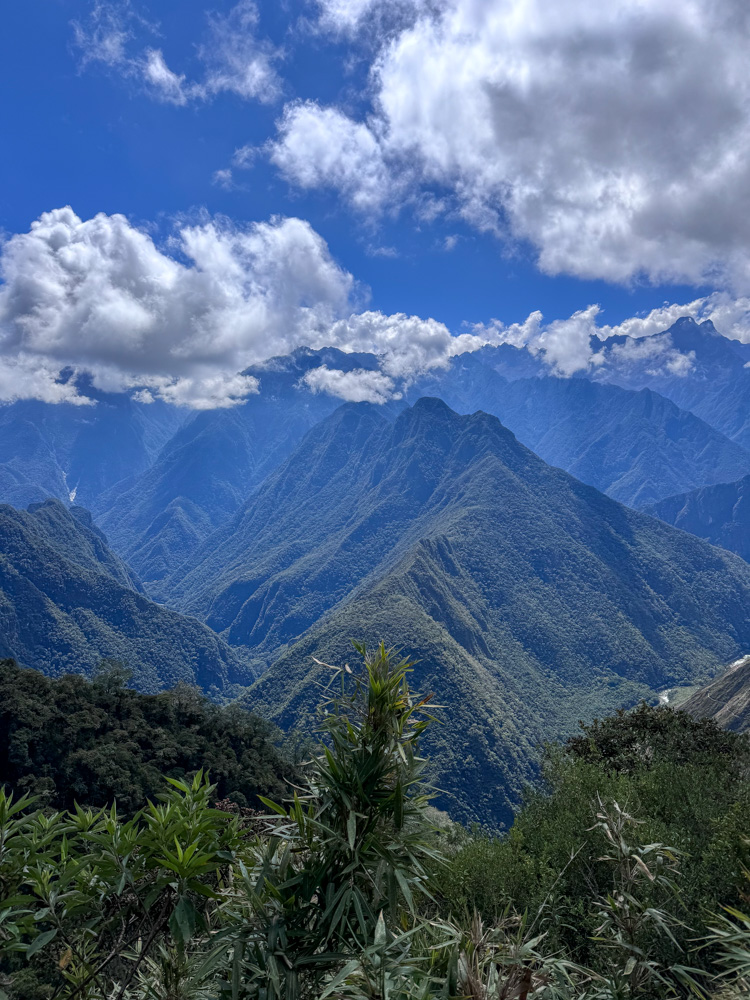
The cheapest
The Inca Trail is one of the world’s most famous hikes, so it’s no surprise that it comes with a hefty price tag. You can expect to pay anything between $650 and $900 for the classic 4-day trek. This typically includes all transport (including the train back from Aguas Calientes), a tour guide, porters, camping equipment and all meals as well as your entry to Machu Pichu.
The Salkantay Trek is much cheaper. If you’re booking at the last minute in Cusco, you can find deals as cheap as $180 for the classic 4-day route. However, it’s essential to check what this exactly includes. While I was in Cusco, many last-minute Salkantay Tours didn’t include the entry to Machu Picchu or the train back to Cusco.
The Inca Trail is much more expensive, but it’s good value for what you get, and your entry to the Inca site is guaranteed.
Note: Remember that neither cost includes tipping. This is expected on both the Salkantay and Inca Trail.
Winner: Salkantay Trek

The ‘easiest’
Neither hike is easy by any means, but the Inca Trail is slightly more manageable.
The Salkantay Trek takes you to a much higher altitude. The maximum elevation varies between tour companies, but it’s usually around 4,600 metres (15,090 feet). I took a slightly different route to connect to the Inca Trail, and the highest point was almost 5,000 metres (16,400 feet). In comparison, the maximum elevation of the Inca Trail is 4,215 metres (13,828 feet) as you cross Dead Woman’s Pass.
While the Inca Trail still goes to a high elevation, it’s not quite as high as the Salkantay, which makes it a bit more manageable for most people. However, altitude sickness is a very real possibility on both treks and should not be ruled out on the Inca Trail.
High altitude aside, I found the terrain on the Inca Trail much easier, and there were fewer hours of hiking. The Inca Trail is mostly a concrete path and steps. While this can be tough on the knees, finding a pace and getting into a rhythm is easier. The terrain on the Salkantay was a mix of dirt, gravel, grass, mud, loose rocks and even some scrambling.
The Salkantay Trek also covers more distance, and I found the hiking days much longer. On one day, we hiked for around nine hours. Overall, the Inca Trail is a little less challenging. However, it’s still not a walk in the park and requires some training.
Winner: Inca Trail


Better for history
Both trails lead you to the historic Machu Picchu, one of the Seven New Wonders of the World. However, it’s not all about the finish point. Along the Inca Trail, you’ll find several Inca Sites, including Intipata and Wiñay Wayna.
The Salkantay did have a couple of archaeological sites, but they were nowhere near as impressive as what we saw on the Inca Trail. If you do the Inca Trail, you’ll also follow the classic path the Incas followed, so there’s a lot to learn and many interesting features.
If your focus is history and seeing as much Inca history as possible, opt for the Inca Trail.
Winner: The Inca Trail
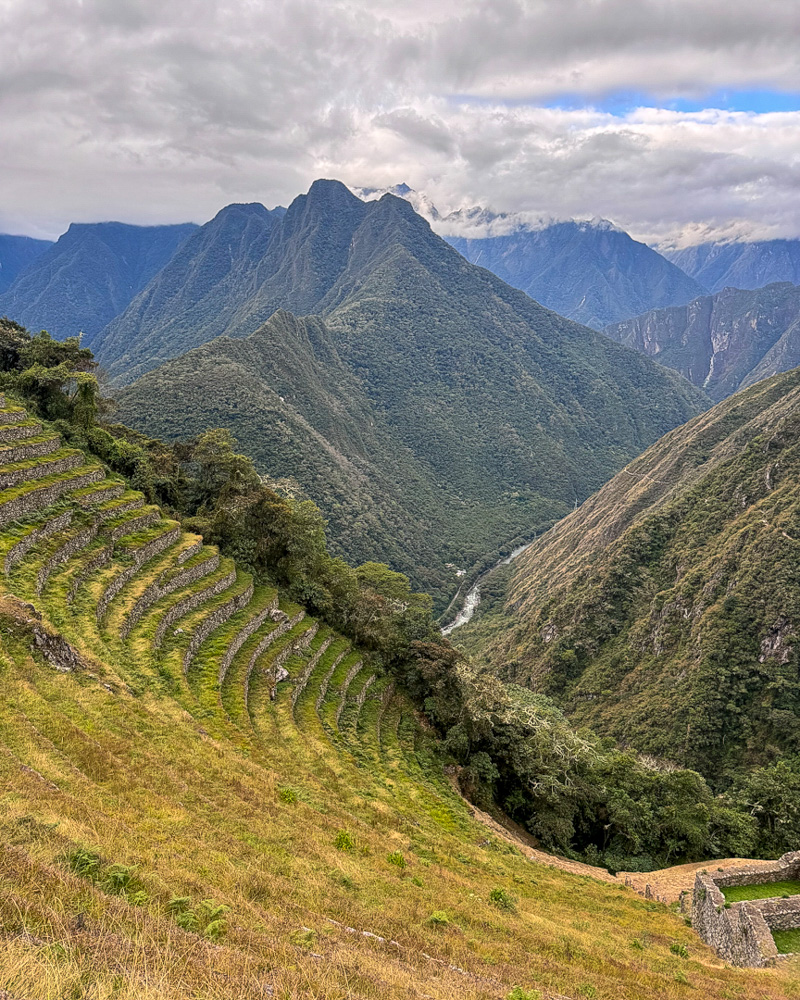
Better facilities and accommodation
Both hikes involve trekking into the mountains, which means the facilities are bound to be basic (and virtually non-existent). However, they do differ slightly.
The three nights on the Inca Trail involve camping at basic camp spots. Most of the sites have toilets (although I wouldn’t recommend using them) and even sometimes cold showers. I wasn’t a huge fan of the campsites as I found them crowded, dirty and very smelly (but I did visit in the peak season).
The Salkantay, on the other hand, varies depending on which operator you choose. Some tour companies offer a mix of camping and basic accommodations, while others offer different types of accommodations, such as hobbit homes and glass roof cabins or domes for stargazing.
As I did the Inca Trail and Salkantay combined, all six nights on the trek involved camping except the first. That night, we stayed in small cabins with glass roofs to watch the stars as we fell asleep. The other two nights on the Salkantay were in tents with magnificent views of the mountains. The Inca Trail nights were all in busy campsites.
Although the Salkantay Trek campsites had no facilities, I still found the camping much nicer. This was mainly because we were the only group and just put tents up in the middle of a field. The campsites on the Inca Trail were crammed and felt a little dirty. However, I did this at the height of the peak season, so it was bound to be at capacity.
Winner: Salkantay Trek


Most magical moments
Both hikes are filled with memorable moments. From reaching Humantay Lagoon to crossing the Salkantay Pass, there is so much to look forward to on the Salkantay.
However, I do think reaching the Sun Gate for sunrise stole the show in terms of memories. When doing the Inca Trail, you’ll leave your final campsite at around 3 am (ouch) and hike to the Sun Gate to watch sunrise over Machu Picchu. Reaching that spot after 3-6 days of hiking is incredibly special and well worth it. This is only possible on the Inca Trail.
On the Salkantay Trek, you’ll spend your last night in Aguas Calientes and visit Machu Picchu once it opens.
Winner: The Inca Trail

How to hike both the Inca Trail AND Salkantay Trek
About the combined hike
If you’re like me and completely stuck on which hike to do, you’ll be pleased to hear there’s the option to combine the Salkantay AND Inca Trail. This isn’t a case of booking two separate tours. Instead, some tour operators offer the chance to combine the two hikes, creating one unforgettable experience.
It goes without saying that combining the two hikes isn’t for everyone. It will involve six or seven days of trekking at high altitude without many facilities. However, I HIGHLY recommend doing both if you think you’re physically and mentally capable.
The trek leads you past glacial lagoons and snow-capped peaks on the Salkantay Trail. On day four, you’ll begin the classic Inca Trail and follow in the footsteps of the Incas. On the final day, you’ll pass through the Sun Gate.
This combined trek offers the best of both hikes and ensures you don’t miss out on anything.

How to combine the two hikes
Two big tour operators offer the combination: Alpaca Expeditions (who I booked with) and Salkantay Trekking. Both companies have slightly different routes, but the overall plan is the same.
The first three days of the trek will follow the Salkantay path around Salkantay Mountain, with the chance to visit Humantay Lagoon. On day two, you take a small detour to the classic route, but you still experience everything Salkantay has to offer (if not more).
Day four is spent reaching the Inca Trail by foot. The starting point differs slightly from the classic trail, but you don’t miss much and quickly join the main path.
On days five and six, you’ll follow the traditional Inca Trail, crossing Dead Woman’s Pass and witnessing the wonders of the Cloud Forest. Finally, on day seven, you’ll hike to the Sun Gate and spend the morning exploring Machu Picchu.
Note: You’ll still need an Inca Trail permit for the combined hike, this means booking before the permits sell out.
Many visitors opt to travel Peru with Peru Hop, they can also help you with booking what you need (just make sure to do well in advance).

Pros and cons of the Inca and Salkantay Combined
I’m really happy I opted to do the combined hike, both trails really are so different. Here are a few pros and cons:
PROS:
- You get to hike the Salkantay AND Inca trail and don’t miss out on anything
- You’ll get to witness the snow-capped mountains but still walk through the Sun Gate
- The diversity of the scenery is so special
- It’s a great way to balance history with natural beauty
- The group size tends to be smaller as it’s not as popular an option (there were only three of us in our group)
- It’s a unique experience
CONS:
- It takes longer, which won’t be for everyone
- It goes to a higher elevation
- It’s a tough hike
- It’s more expensive

My personal experience
I was so torn on whether to do the Salkantay Trek or the Inca Trail. When I say I spent years deciding between the two, I’m not being dramatic.
The Salkantay offers incredible mountain views, but the Inca Trail is famous for good reason and offers the chance to see the Sun Gate at sunrise. As I was so indecisive and have done multi-day hikes before, I opted to do the combined tour, and I am SO happy I did.
Here are my thoughts on the two. These are my own personal thoughts and in all honesty, both hikes are amazing.
Salkantay Trail thoughts
This was my favourite hike out of the two by a mile. I loved being deep into the mountains. The diversity of scenery was incredible, and the quiet trails were a dream. I also much-preferred camping on the Salkantay Trail. The first night was spent in a glass-roofed cabin, and I fell asleep watching the stars.
On the second night, we camped at over 4,600 metres, with epic views of Salkantay and some of the most spectacular stars I’ve ever seen. While the hike was more challenging and the camping more basic, I much preferred the Salkantay.
It’s worth noting that if you do the combination hike, you take a slightly different route after the second day. You may encounter more people on the traditional route, but nowhere near as many as the Inca Trail (in peak season).

Inca Trail thoughts
Arriving on the Inca Trail after being on the Salkantay for four days was a bit of a shock to the system. To be honest, I think the switch between the two is part of what I didn’t like about the Inca Trail. If I’d just done the Inca, I probably wouldn’t have been as critical.
The first campsite we stayed in was full to the brim—so full that our guide struggled to get our tents into the space. This was very different from what we had experienced on the Salkantay where we were the only people for miles.
However, I don’t want to put the Inca Trail down. If you can look past the peak-season crowds, it really is a special hike. While I don’t think the mountain scenery is quite as impressive as the Salkantay, it still boasts some great views.
What made the Inca Trail magical for me was hiking to the Sun Gate for sunrise. After hiking for an entire week, passing through the Sun Gate and seeing Machu Picchu in its full glory is a moment I will never forget.
The Inca Trail also has a lot more history and our guide spent a lot of time sharing information with us, much more than when we did the Salkantay.

Summary
I loved both hikes, but the Salkantay comes out on top thanks to the scenery and quiet trails. Of course, this is a personal opinion, and I entirely understand why people prefer the Inca Trail. The Salkantay won’t be for everyone.
If you have the time, budget and physical ability to do both hikes I really recommend it. Both hikes are so different and it’s a great balance of nature and history.
Summary: Which is right for you?
I hope you’ve found this post on the Inca Trail vs Salkantay somewhat useful! It’s hard to give a clear answer on the Inca Trail vs Salkantay as there are so many factors that determine which hike is right for you, and it will ultimately come down to personal preferences.
Here’s a (hopefully) helpful summary:
The Inca Trail is right for you if:
- You want to enter Machu Picchu via the Sun Gate
- You’re interested in Inca history
- You can plan your trip ahead of time
- You want to walk the classic Inca path
- You prefer history to mountains
The Salkantay Trek is right for you if:
- You want to avoid the worst of the crowds
- You’re planning your trip last-minute
- You want epic mountain views
- You’re not overly bothered by Inca history
- You’re on a budget
Of course, if you can do both, do both! This way, you won’t need to decide between the two and can experience both for what they are. Both hikes offer incredible scenery, so the decision really comes down to how much you want to walk on the classic Inca path and walk through the Sun Gate.
There are also a couple of alternative treks for those who want to get off the beaten path. I recommend the Lares Trek or even the Quarry Trail. Both of these hikes boast beautiful views without the crowds.
Whatever you decide, I hope you have an amazing time. You can book the EXACT hike I did right here with Alpaca Expeditions (I get no commission for this, but they’re a great company and I can’t recommend them enough).
Thanks for reading this post. Share on social media or save for later.



